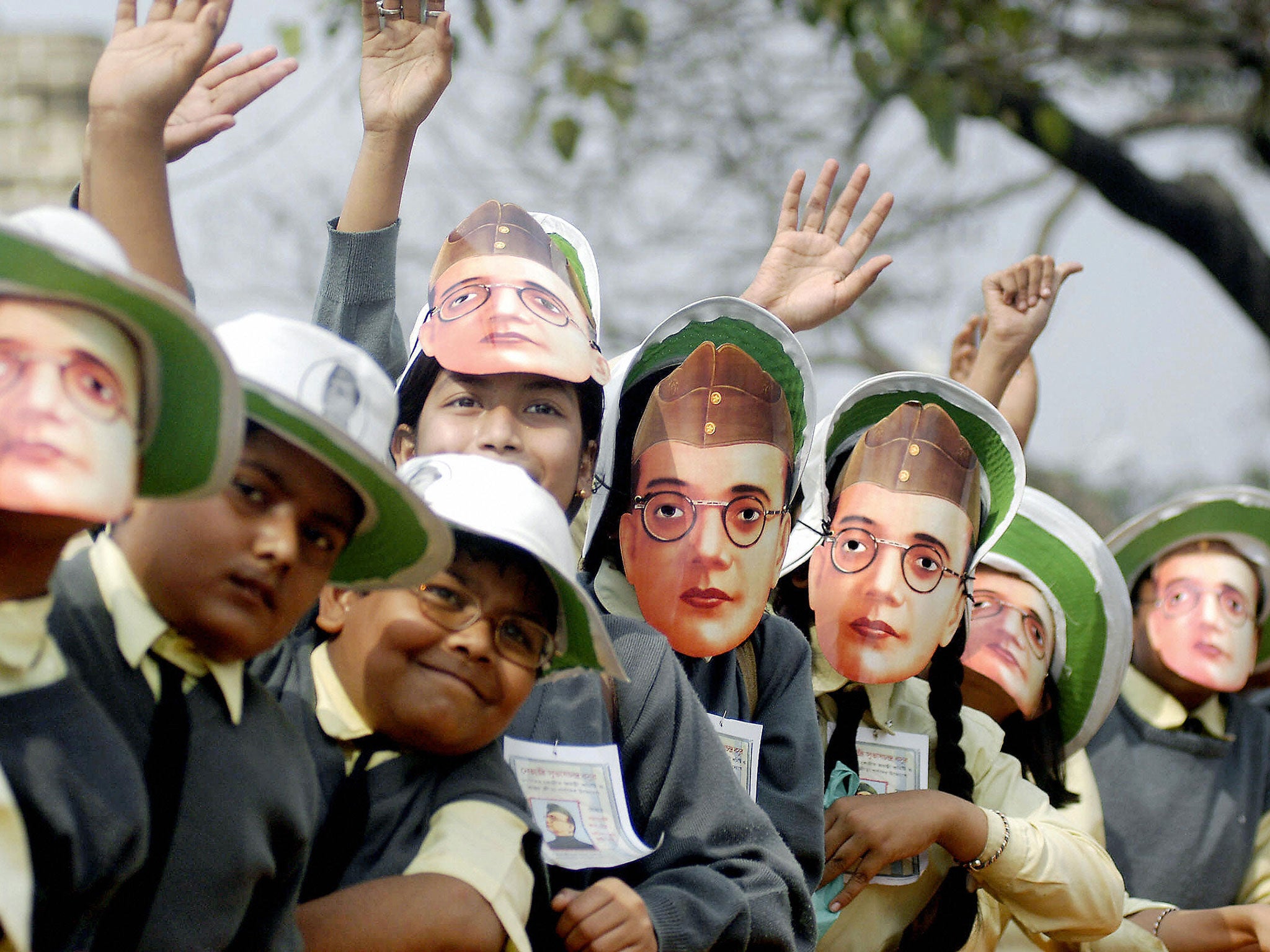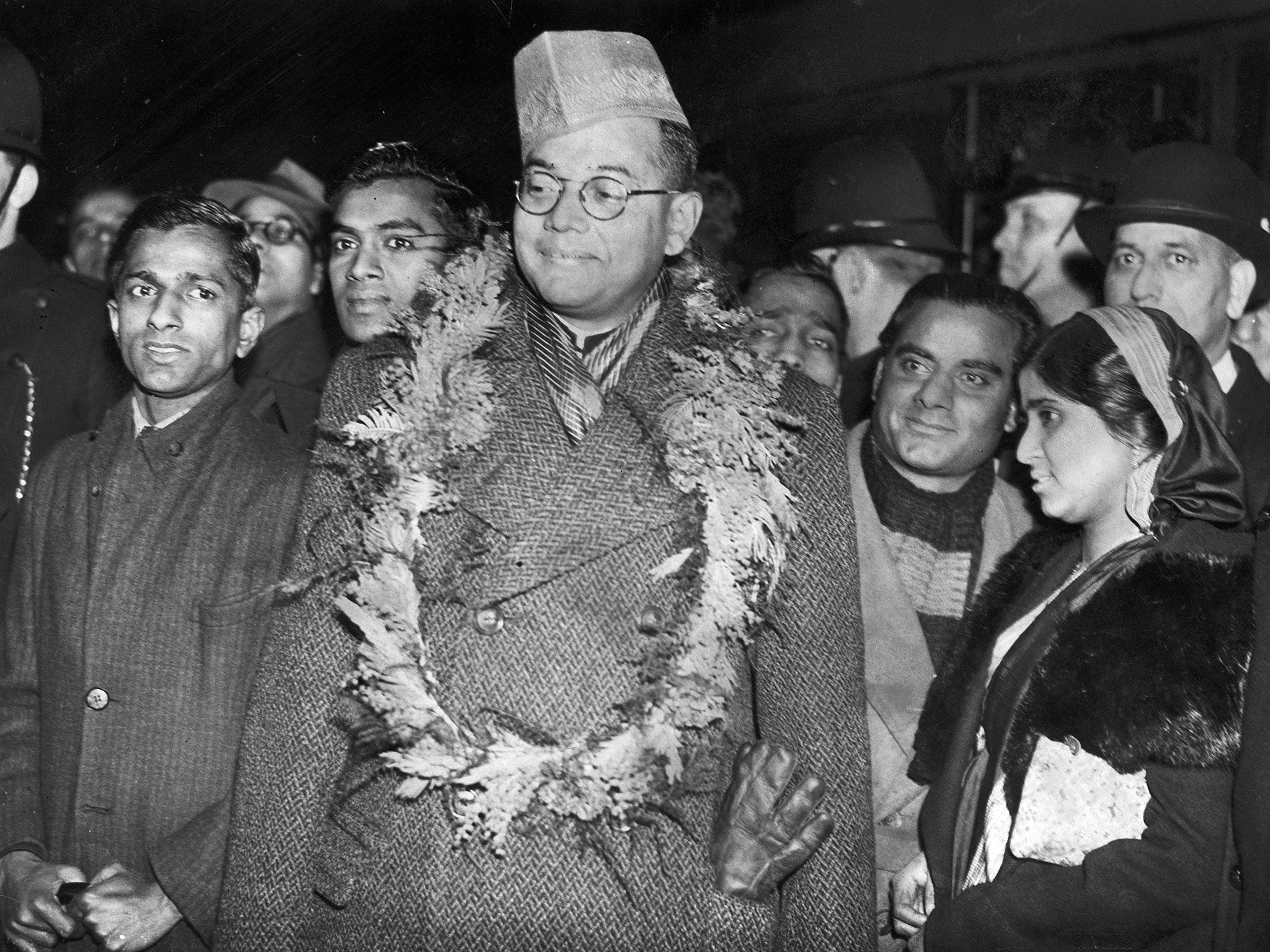Subhas Chandra Bose: Secret files on India's lost freedom fighter made public
The radical nationalist was reported to have died in a plane crash at the end of the Second World War. But, as Leila Nathoo reports from Delhi, he still haunts the corridors of power

Your support helps us to tell the story
From reproductive rights to climate change to Big Tech, The Independent is on the ground when the story is developing. Whether it's investigating the financials of Elon Musk's pro-Trump PAC or producing our latest documentary, 'The A Word', which shines a light on the American women fighting for reproductive rights, we know how important it is to parse out the facts from the messaging.
At such a critical moment in US history, we need reporters on the ground. Your donation allows us to keep sending journalists to speak to both sides of the story.
The Independent is trusted by Americans across the entire political spectrum. And unlike many other quality news outlets, we choose not to lock Americans out of our reporting and analysis with paywalls. We believe quality journalism should be available to everyone, paid for by those who can afford it.
Your support makes all the difference.Despised by the British as a radical Indian nationalist so determined to liberate his country from colonial rule that he allied himself with the Nazis and imperial Japan, Subhas Chandra Bose is revered in India as an independence hero.
After leading the 40,000-strong Indian National Army into battle with Britain in 1944, Bose faced possible execution when the Second World War ended, though his supporters still hoped he would one day play a key role in a free India.
So when he was reportedly killed in a plane crash in Taiwan, just days after the surrender of the Japanese in August 1945, it was a relief for the Raj but a bitter blow for Indians, many of whom simply refused to believe that he was dead.
More than 70 years and three official inquiries later, the recent declassification of a cache of government documents on the revolutionary leader has only reignited the long-running debate about Bose’s death.
“There is no need to strangle history,” said Prime Minister Narendra Modi, when he announced the secret files would be made public.
Mr Modi tried to seize the political initiative by promising what the opposition Congress Party had repeatedly failed to authorise while governing India for most of its post-independence years.
Its reluctance to disclose anything related to Bose only encouraged speculation that there was something to hide, and though nothing definitive has yet emerged from the 100 declassified files, the controversy has once again captivated the country. Bose – popularly known in India as Netaji (“respected leader”) – has been largely eclipsed in the history books by Mahatma Gandhi, the pacifist father of the nation, and Jawaharlal Nehru, the country’s first Prime Minister.
But Bose commanded a huge following during the 1930s and early 40s from his base in his native West Bengal. He was twice elected president of the Indian National Congress, the main political force for independence, and was prepared to use violence to secure India’s freedom.

He took to agitating from afar, first from Nazi Germany (after escaping from house arrest in India in disguise in 1941); and then from Southeast Asia, where he mounted his military campaign against the British with the help of Japan, and where he lived out his final days. The evidence of Bose’s death – including witnesses’ accounts of the crash and his treatment in hospital, has failed to convince many who argue that he was alive long after 1945.
The plane crash theory was planted by Bose and his supporters, to allow Bose to escape to Russia without being caught, said Anuj Dhar, founder of a group called Mission Netaji, which is dedicated to uncovering the truth about what happened. Mr Dhar, author of India’s Biggest Cover-Up, is among those who believe Nehru must have known that Bose was in Russia.
In declassifying the documents, Mr Modi was responding to long-standing demands from members of Bose’s extended family, but he also saw a political opportunity: his Bharatiya Janata Party has begun championing Bose’s legacy, to establish its connection to India’s freedom struggle; it accuses Congress, which lays claim to both Gandhi and Nehru, of steadily erasing Bose’s role from the historical record. Congress leaders dutifully paid tribute on the anniversary of Bose’s birth in January, when the government files were released.
With his disclosure, Mr Modi also somewhat trumped the regional party in charge of West Bengal, which released its own trove of documents in September. There was little in them, apart from the embarrassing revelation for Congress that the Bose family had been spied upon for 20 years, possibly out of fear of a new political faction emerging, though some smell a conspiracy here, too.
Netaji’s numerous descendants are divided in their reactions. The BJP has attracted into its ranks one of his grand-nephews, Chandra Kumar Bose who, like many of his relatives, believes there is no conclusive evidence of the crash. Other family members disagree. Netaji’s only child, Anita Pfaff, accepts the official narrative, but has called for DNA testing on the ashes held in a temple in Japan that are reported to be his. Another grand-nephew, Sugata Bose, a renowned historian and biographer of his great uncle, is frustrated that the supposed “mystery” has been allowed to obscure more valuable insights.
“We need to focus on what the man stood for,” he told The Independent, pointing to Netaji’s insistence on religious harmony and respect for minorities. “His life is far more important than the circumstances of his death,” he said.
If Bose’s presence in Russia after 1945 is the most widely accepted alternative account to his perishing in a plane crash, what happened next is far more contested.
Possible theories range from being held prisoner in a Siberian gulag before eventually being killed, to the more outlandish idea that he returned to India to live undercover as a reclusive holy man.
In 2006 the most recent commission set up to look into Bose’s death, led by retired judge Justice Mukherjee, concluded – contrary to the findings of two previous inquiries – that the Taiwan crash was a fiction. The government at the time chose not to accept his opinion, leaving the issue unresolved.
As the recently declassified documents are still being pored over, and with 25 more set to be released each month, many are hoping to find a smoking gun.
“Make everything public and let the public decide,” Mr Dhar said. “We want the truth to come out – whatever it is.”
Join our commenting forum
Join thought-provoking conversations, follow other Independent readers and see their replies
Comments